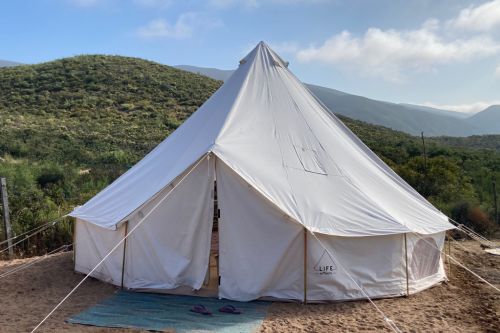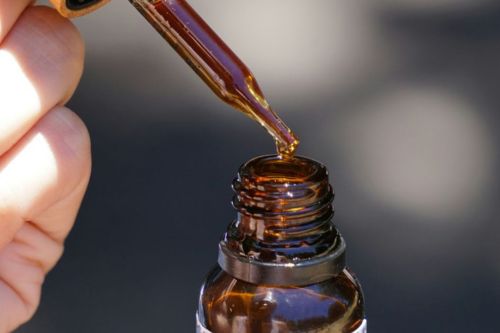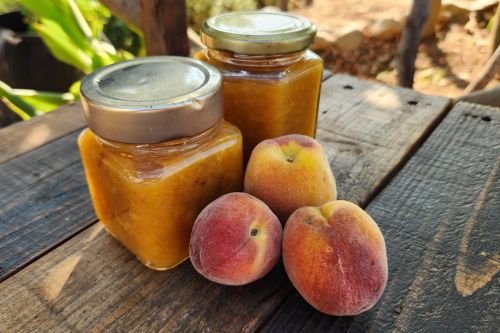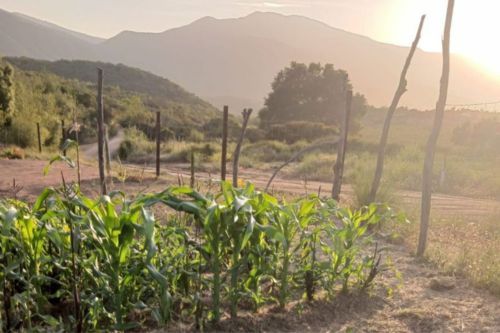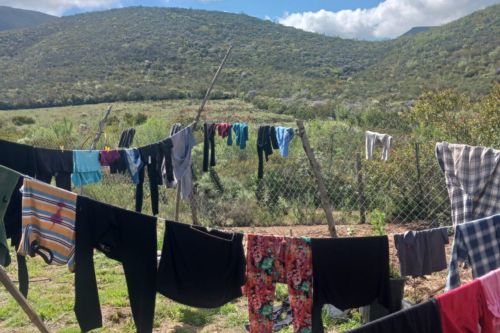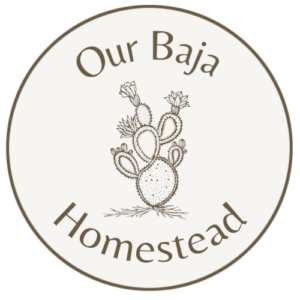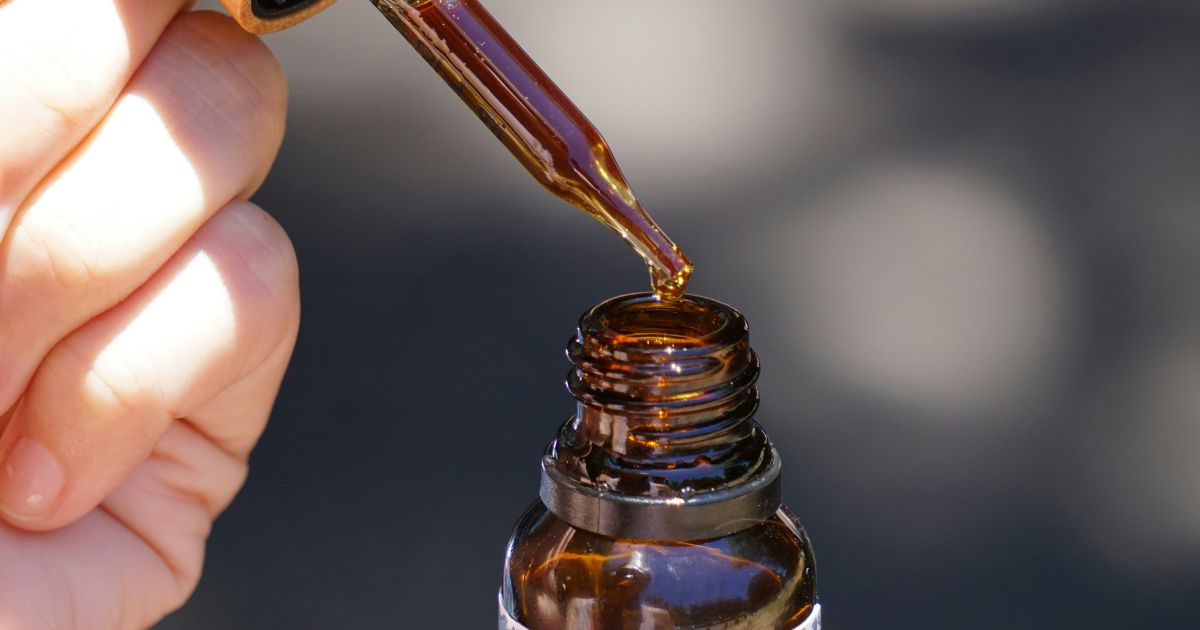Herbalism is a holistic approach to medicine that uses plant-derived medicine to treat sickness, illness or overall well-being. This practice is becoming very popular as an alternative (or addition) to modern medicine, as more people are returning to a more nature-based lifestyle.
One popular product from the world of herbalism is a tincture. A tincture is a concentrated plant extract made of herbs soaked in alcohol, vinegar or vegetable glycerin. Tinctures are taken orally, either diluted in water or tea, or taken straight up placed under the tongue.
How are tinctures effective?
Although the effectiveness of any herbal medicine largely depends on the amount and type of herbs used, the base of an herbal medicine will affect your treatment as well. Because the herbs are soaked in a solvent for 4 to 6 weeks as a standard, the medicine in a tincture is very potent (compared to that of a tea that soaks for a few hours).
Additionally, when a tincture is ingested (especially underneath the tongue) the medicine enters the bloodstream for a quick absorption. This ensures quick results, which is imperative during an acute sickness or mental health breakdown.
What is the Folk Method?
The folk method is the simplest way to prepare a tincture. In this method you are eyeballing the measurement of your herbs and letting them sit in the solvent for 4 to 6 weeks (and shaking the mixture daily). The folk method is tried and true – the earliest herbalists used this method to make tinctures. Once you get to know an herb’s potency, this method gets easier to do.
We will be using the folk method for this Step-by-Step Tincture making tutorial.
Tinctures Made with Vegetable Glycerin
Although tinctures made with alcohol reach your bloodstream the fastest, tinctures made out of vegetable glycerin also ensure that the herbal medicine reaches your bloodstream and treats your sickness in a timely manner. According to www.healthline.com, “Vegetable Glycerin also known as glycerol or glycerine, is a clear liquid typically made from soybean, coconut or palm oils.”
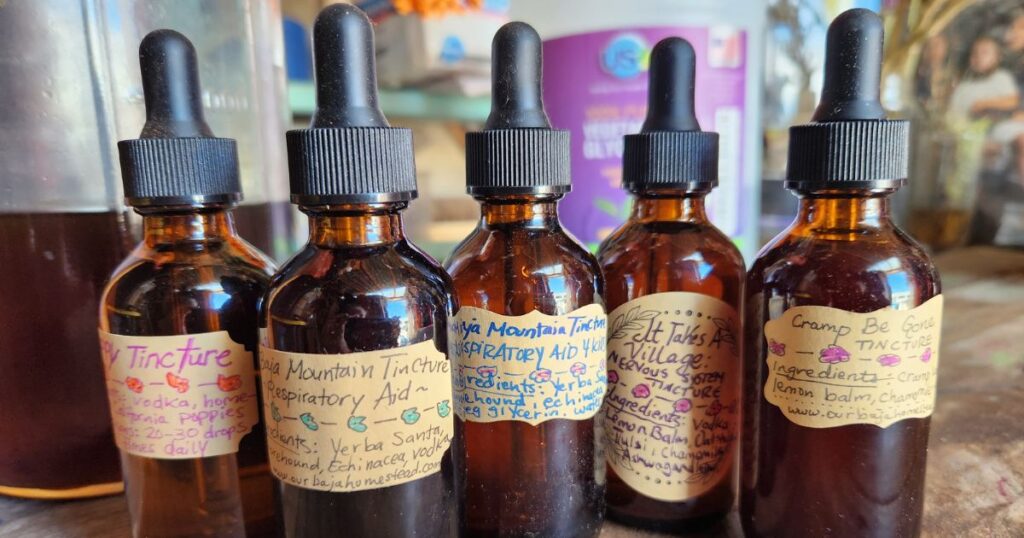
People choose vegetable glycerin over alcohol mainly for its taste and the fact that it’s not alcohol. Vegetable glycerin tastes slightly sweet, so it is a great option for snotty nosed kids! Since there is no alcohol in this solvent, sober people may be likely to choose vegetable glycerin over alcohol so they can stay on the sobriety path.
You can also make alcohol free tinctures with vinegar. Just make sure it’s organic and food grade to ensure quality.
How Do I Make an Alcohol-Free Tincture (Vegetable Glycerin Based) Using the Folk Method?
For this blog post we will focus on making a vegetable glycerin-based tincture. You will need these items.
- High quality vegetable glycerin: A good choice is coconut based, and organic is always a solid choice.
- High quality herbs of your choice: Any herb can be tinctured – just make sure the herb is not toxic first.
- Water: Glycerites need to have water as an additional solvent to ensure for edibility.
- Glass Jars: You will want 2 jars – one to start the herbal tincture in and one to strain the finished tincture into (after 4-6 weeks).
- Bowls and a Scooper: You will need bowls to mix and weigh your herbs if you are using more than one herb. I use a small bowl on the scale and a large bowl for mixing. The scooper is for mixing and for adding to the glass jar.
- Food Scale (Optional): I like to use a scale to weigh each herb, because I am selling my products. But you can skip this item!
- Cheesecloth: At the end of 4 to 6 weeks when the herbs have infused into the vegetable glycerin, you will need to strain the herbs. A cheesecloth is perfect for this job because it prevents herb pieces from entering the tincture.
- Canning Funnel (Optional): I like to use a canning funnel underneath the cheesecloth when straining to stabilize the very flimsy cheesecloth. You do not need to buy this item, but if you already have one go ahead and bust it out for this project!
- Labels: Don’t be a dork and forget to label your tinctures! I just use brown shipping tape and call it a day.
Now Let’s Make a Tincture Without Alcohol!
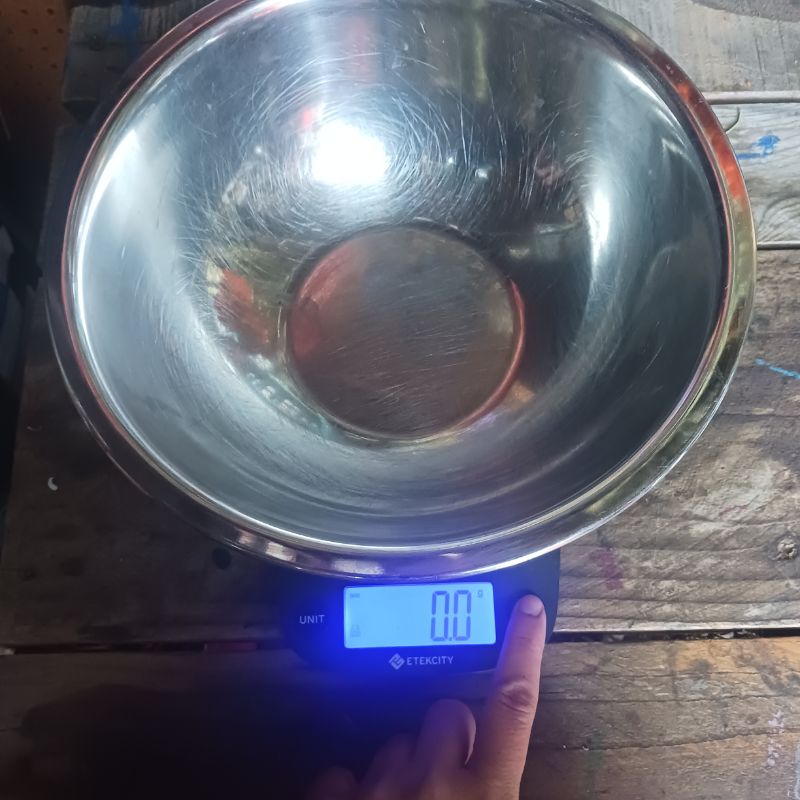
Step 1: Weigh Out Your Herb(s) and Add Them to a Mixing Bowl
Add your weighed or unweighted herbs to a large mixing bowl. (Like I stated above, this step is optional. I weigh my herbs because I sell my tea products, and I want the herbs to be equally distributed.)
Step 2: Mix Your Herbs Well
Don’t skip this step! You will want your herbs to be mixed well so that the tincture has even flavors. You can do this with your hand or with a scooper.
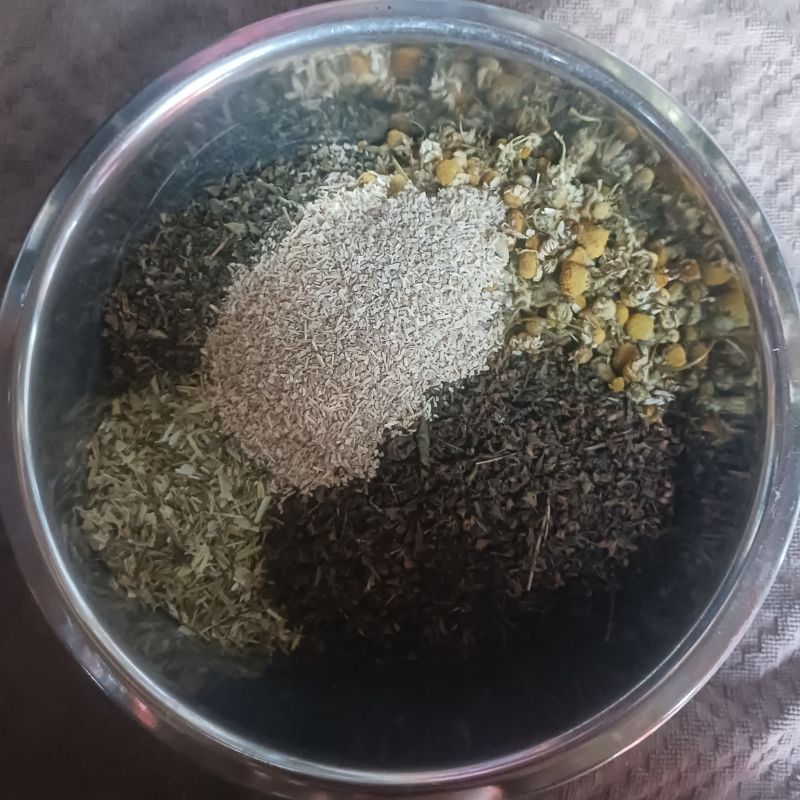
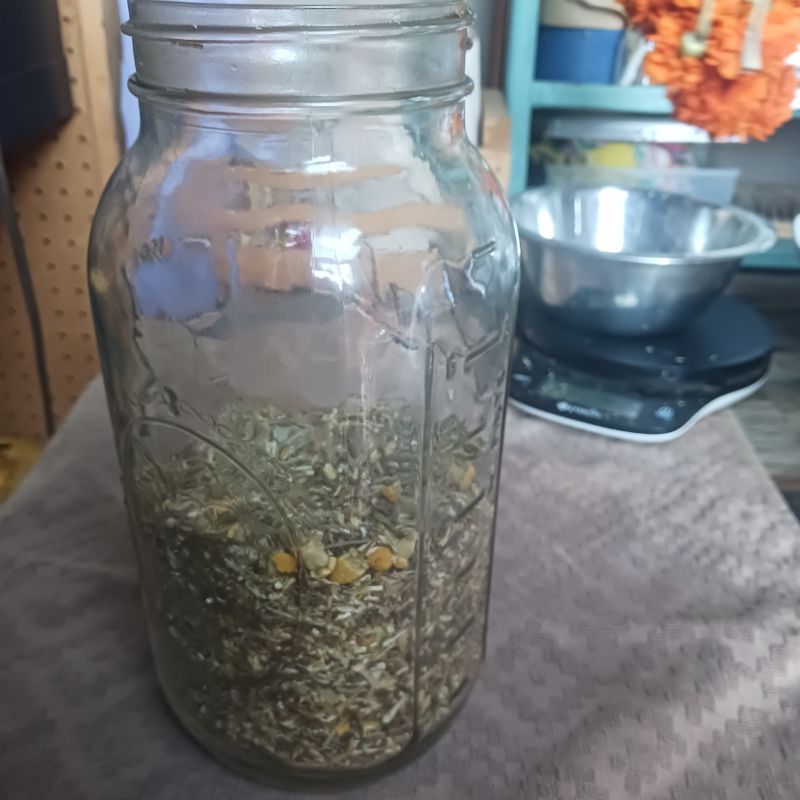
Step 3: Transfer the Herbs to a Clean Mason Jar
Next, put the herbs in a clean mason jar (sterilize the jar beforehand by washing it with hot water). Fill the jar up one-third to halfway with the herbs. I always fill my jars halfway for maximum potency.
Step 4: Measure Out Your Vegetable Glycerin and Mix with Water
As we are doing the folk method, you will have to figure out how much vegetable glycerin and water mixture to pour over your herbs.
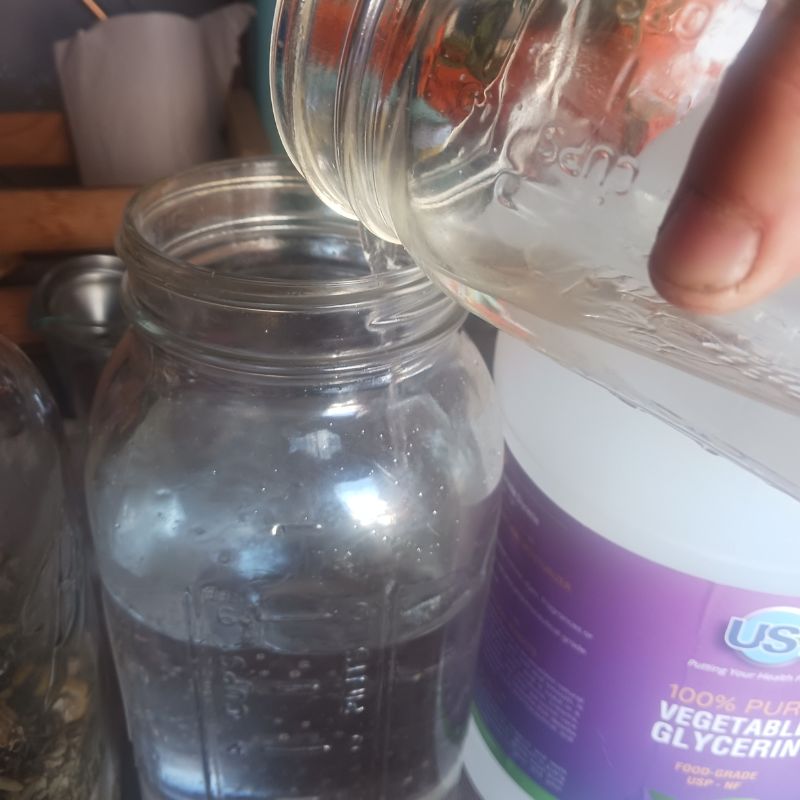
The tincture is a 2:1 ratio (2 parts vegetable glycerin and water solvent and 1-part herbs), while the vegetable glycerin mixture is a 3:1 ratio (3 parts vegetable glycerin to 1 part water).
Remember, right now we are just making the vegetable glycerin mixture but save that 2:1 ratio for when we pour the solvent over the herbs. Got that?!
For example: I used a half gallon mason jar to make a Nervous System Recovery Tincture. I made a vegetable glycerin and water solvent using a rough ratio of 5: 2 (so 5 cups of vegetable glycerin to 2 cups of water). Note: this a folk method, so my numbers are not exactly mathematically correct. When using vegetable glycerin as a solvent you will want to make sure it has a flowing liquid texture rather than a sticky/gooey one. So, feel free to add more water until you get the right consistency!
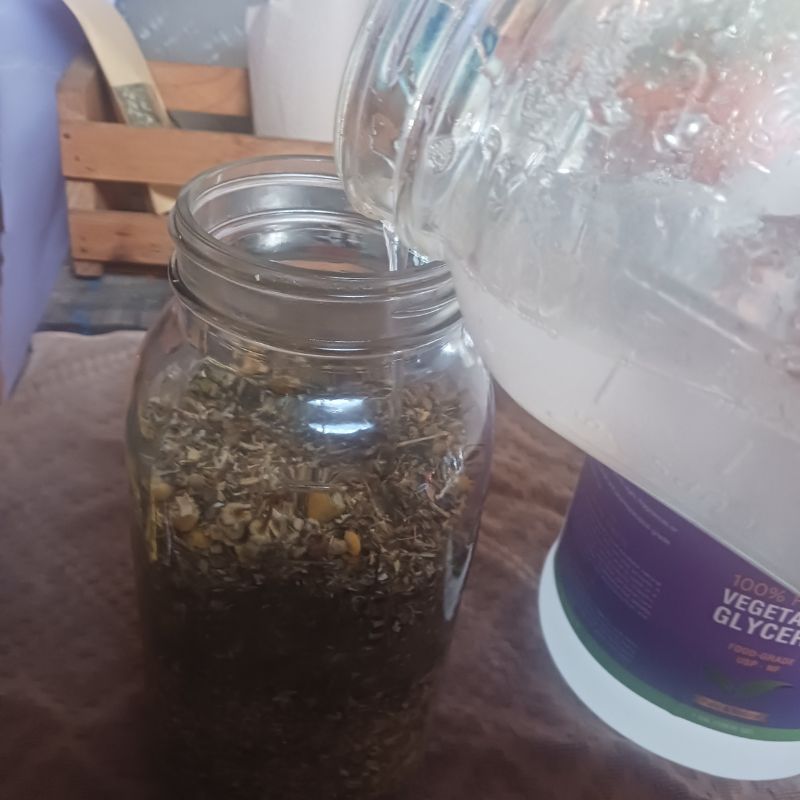
Step 5: Combine the Vegetable Glycerin/Water Mixture with the Herbs
Now you will pour the vegetable glycerin/water mixture into the jar with the herbs. Close the lid and give it a good shake. Don’t worry if your herbs float to the top- that’s normal.
Step 6: Label Your Jar
Label the tincture with the date you made the herbal concoction and the ingredients. You can also include the ratios you used if you took the Standard Method route.
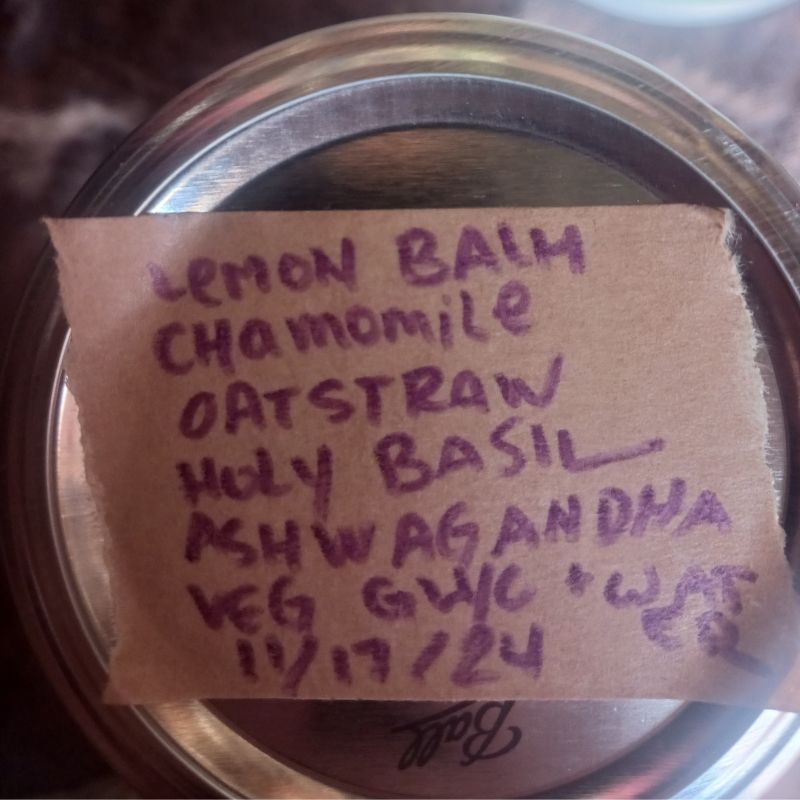
Step 7: Wait 4 to 6 Weeks
Leave your tincture mixture in a cold, dark place for 4 to 6 weeks (cupboards rock for these kind of projects). Leaving the mixture longer than 6 weeks is okay but just remember that past 8 weeks your tincture will become bitter. Also! Don’t strain the herbs earlier than 4 weeks, to maximize the potency of your tincture.
Make sure you shake the mixture daily to distribute the potent medicine!
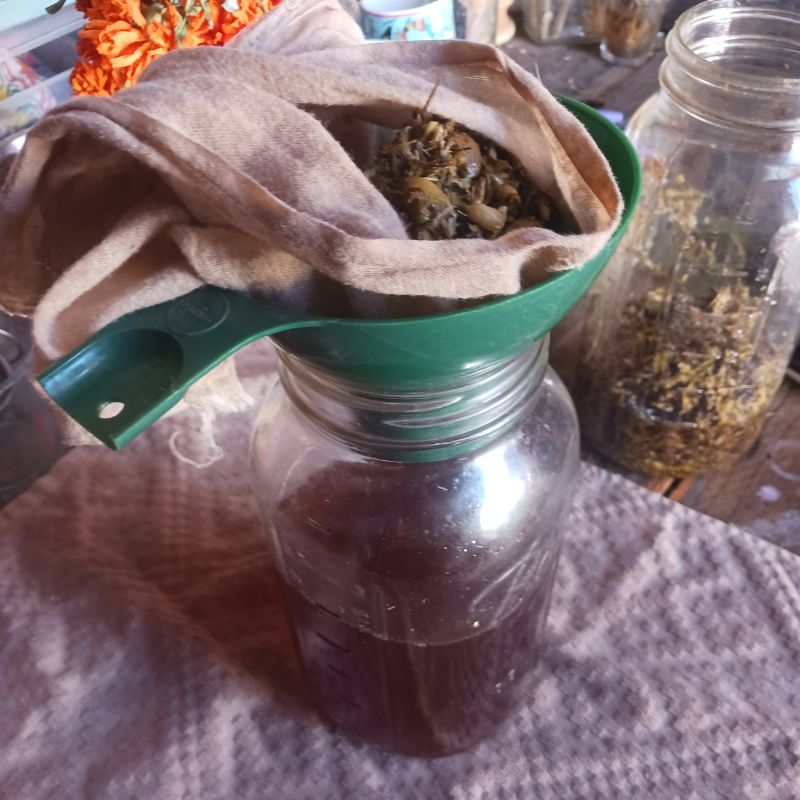
Step 8: Strain Out the Herbs from Your Mixture
After 4-6 weeks the herbs from the herbal mixture are ready to be strained out. Take your canning funnel and place it over a clean mason jar (of the same size as the other jar you are using).
Place a clean cheesecloth over the canning funnel and jar. Slowly pour your herbal mixture over the cheesecloth to collect the tincture into the glass jar. 3
Little by little squeeze out the tincture from the cheesecloth and put the leftover herbs in the compost – this leaves room to add more herbs for the squeezing process.
Step 9: Enjoy Your Tincture!
At this point, you will have a glass full of the tincture ready to ingest. You can leave it in this jar or place the liquid in a glass jar with a dropper. Then you can take the medicine by the dropperful underneath the tongue or in tea or water.
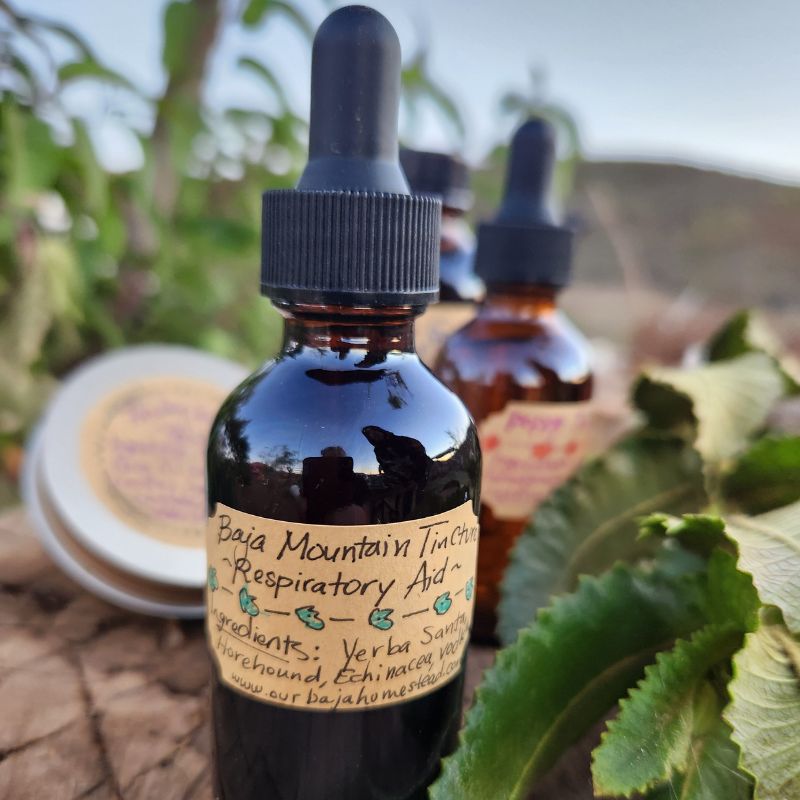
Note: tinctures made out of vegetable glycerin last one year and do not require refrigeration.
